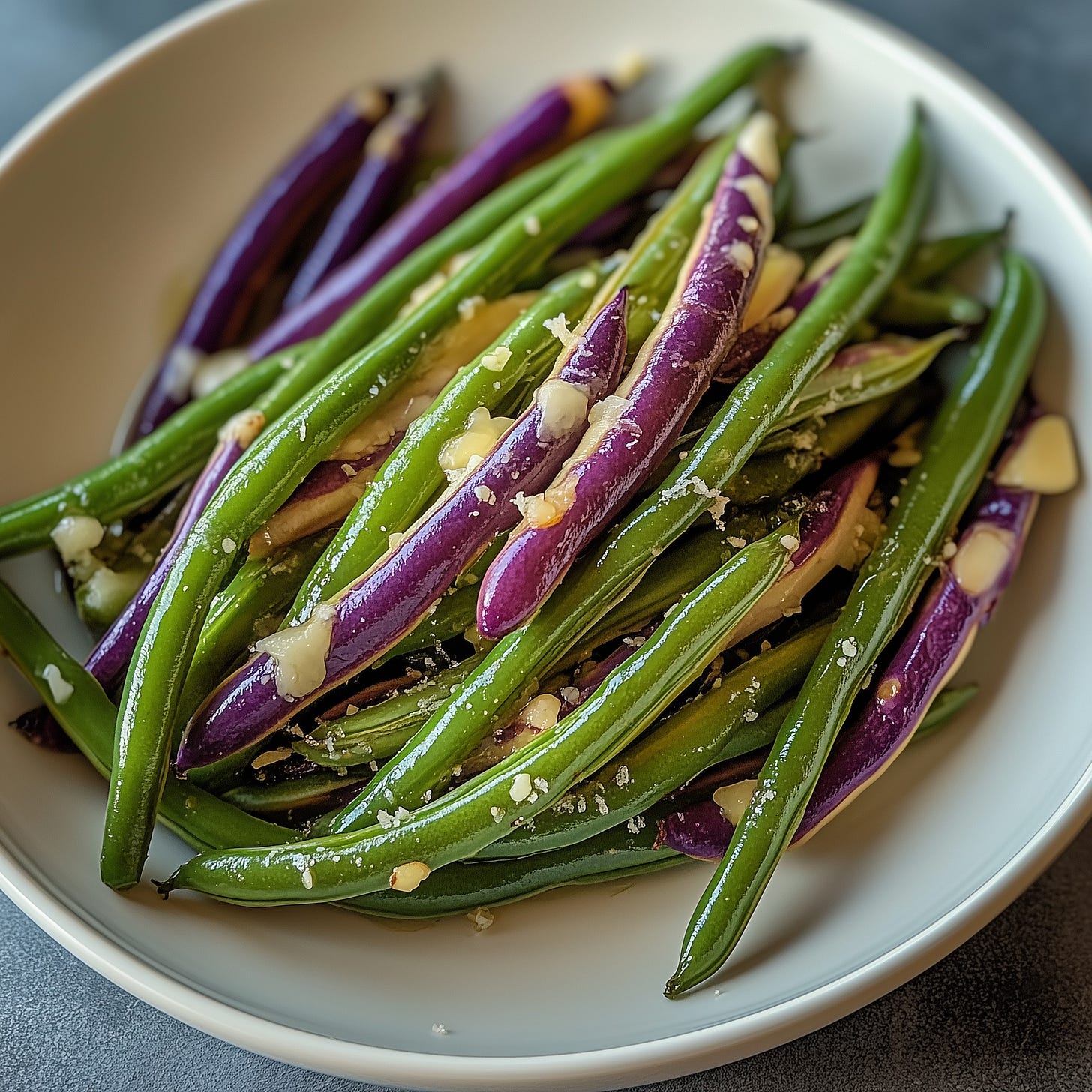Dragon beans, also known as dragon tongue beans, are a unique and colorful variety of heirloom beans that are sure to catch the eye and tantalize adventurous taste buds. With their vibrant purple streaks against a pale yellow backdrop, dragon beans stand out in any garden or dish. In addition to their striking appearance, these beans are packed with nutritional benefits and offer a fun way to encourage healthy eating for kids and adults alike.
5 Benefits of Dragon Beans:
Rich in Fiber: Like many legumes, dragon beans are high in dietary fiber, which aids digestion and promotes a healthy gut. Including fiber-rich foods in your diet can help regularity and support overall digestive health.
Low in Calories, High in Nutrients: Dragon beans are low in calories but rich in essential nutrients, including vitamins A and C, which support immune function, eye health, and skin health. They also contain important minerals like calcium and iron.
Antioxidant Powerhouse: The colorful pigments in dragon beans are a sign of their high antioxidant content. These antioxidants help protect the body from oxidative stress and reduce inflammation, potentially lowering the risk of chronic diseases like heart disease and cancer.
Supports Heart Health: Dragon beans are a great source of potassium, which helps regulate blood pressure and supports heart health. They also contain folate, which is important for maintaining cardiovascular health.
Fun and Adventurous for Kids: Their cool appearance and unique name make dragon beans a fun way to get kids excited about eating vegetables. In fact, in my recent horticulture class, a dad had great success getting his children to eat dragon beans simply because they thought they looked cool! Their vibrant colors and satisfying crunch make them a hit at the dinner table.
Are Dragon Beans in Season Now?
Dragon beans are typically harvested in late summer and early fall, making now a great time to enjoy them if you're reading this in October. Depending on your location and climate, they may still be available fresh at local farmers' markets or even in your own garden. They're also easy to grow, especially if you're planning next year’s garden, as they thrive in warm weather and can be harvested once the pods reach about 6 inches long.
Historical and Cultural Significance:
Dragon beans have been cultivated for centuries, primarily in Europe, where they were prized for their unique appearance and taste. As an heirloom variety, they have a rich history of being passed down through generations of gardeners, maintaining their original, unmodified traits. In many cultures, beans are associated with fertility and abundance due to their ability to produce large yields, and dragon beans have carried that symbolic weight in regions where they have been cultivated for generations.
In more modern times, dragon beans have gained popularity in the health food movement, where their vibrant appearance and nutrient profile make them a desirable addition to farm-to-table cuisine.
Fun Symbolism and Conspiracy Theories:
The name "dragon" adds an element of mythical allure to these beans, which may have contributed to playful or quirky conspiracy theories. Some people suggest that their unusual appearance and rapid growth are a result of ancient agricultural practices involving mystical influences. A fringe theory posits that dragon beans were the result of crossbreeding experiments by early botanists attempting to create “magical” crops. Though there's no real evidence for this, the fantastical name and colors invite imaginations to run wild.
Another playful theory involves their supposed connection to the legends of dragon mythology, where the beans are said to have been "blessed" by dragon spirits, giving them their vibrant streaks. Of course, this is all in good fun, but their whimsical appearance does make it easy to imagine a magical backstory.
A Treat for Adventurous Palates:
Dragon beans are not just a visual treat—they also offer a delightful eating experience. Their flavor is mild, with a slightly sweet, nutty undertone, and when cooked, they tend to lose their purple streaks, turning a uniform yellow-green. This transformation can be a fun surprise for kids and makes them a great addition to stir-fries, salads, or as a crunchy snack on their own.
For those who love trying new and unusual foods, dragon beans are an excellent choice. They can be served raw, sautéed, roasted, or steamed, and their bright colors make them a perfect garnish or centerpiece for creative dishes. Whether you're trying to introduce more vegetables into your diet or looking for something fun to share with your family, dragon beans are a fantastic option for adventurous palates.
Steamed Dragon Beans Recipe:
Ingredients:
1 pound Dragon Tongue Beans
1 tablespoon olive oil or butter
1 clove garlic, minced (optional)
Salt and pepper to taste
Fresh lemon juice (optional)
Sesame seeds or Parmesan cheese for garnish (optional)
Instructions:
Wash the Dragon Tongue Beans thoroughly and trim off the ends.
Bring a pot of water to a boil and add a steamer basket.
Place the beans in the steamer basket and cover with a lid. Steam for about 4-6 minutes, or until the beans are tender but still slightly crisp.
While the beans are steaming, heat olive oil or butter in a small pan over medium heat. Add minced garlic and sauté for 1-2 minutes until fragrant (optional).
Once the beans are done, transfer them to a serving dish. Drizzle with the garlic-infused oil or butter, or simply season with salt and pepper to taste.
For an extra touch, add a squeeze of fresh lemon juice and garnish with sesame seeds or Parmesan cheese.
Serve immediately and enjoy!
This simple recipe brings out the natural flavor of Dragon Tongue Beans, making them a perfect side dish or snack. The vibrant colors may fade when steamed, but the fun name and delicious taste will keep both kids and adults coming back for more.






